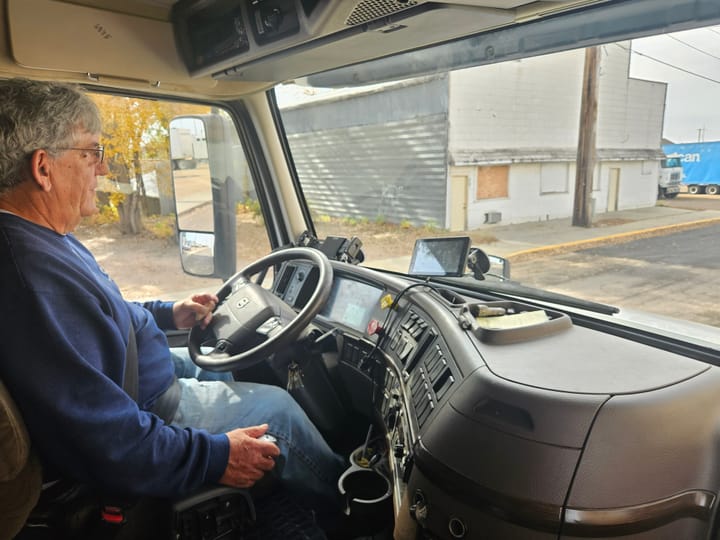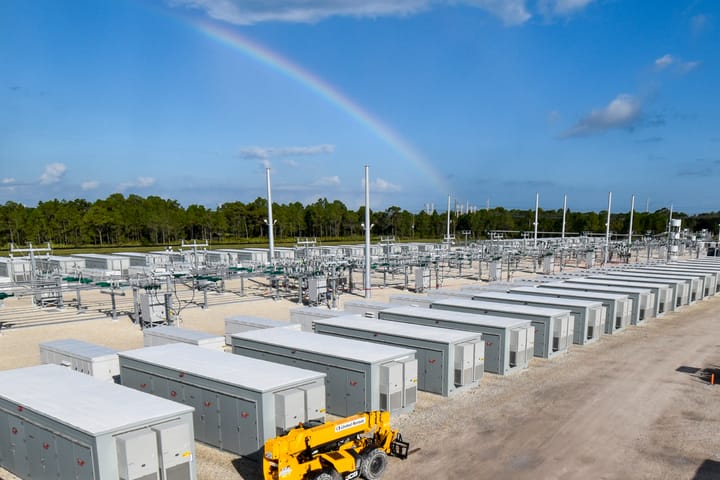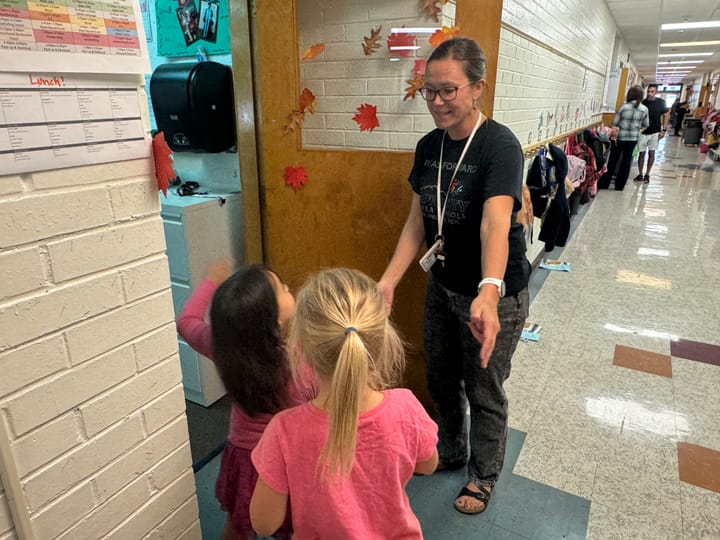Internet coverage, reliability in rural areas hinders development
South Dakota is threatened by a growing urban-rural digital divide, endangering residents’ quality of life and economic development efforts unless significant investments are made in advanced mobile technology, a new study suggests.
Researchers from the University of South Dakota and Virginia’s Old Dominion University interviewed and surveyed rural South Dakota residents last fall to determine their perceptions of coverage, capacity and speed of Internet access.
While South Dakota’s economy has outpaced national economic growth over the last two decades, Bob McNab, an economist and director of Old Dominion’s Center for Economic Analysis and Policy and the study’s lead author, says many participants indicated their rural networks have insufficient coverage, capacity and speed for basic health and safety, let alone quality of life.
“The most intriguing finding was, if you look at mobile coverage maps, providers would say the entire state is covered,” McNab noted. “But what we found was the facts on the ground are dramatically different for rural consumers compared with urban consumers.”
Expanding broadband access in the state is a priority of Gov. Kristi Noem. On her “Priorities Tour” in late February, Noem said she is committed to bringing high-speed internet to every corner of the state, enabling advances and increased employment in industries such as bio-tech, cybersecurity and technology.
It is also a focus nationally. The U.S. Department of Agriculture has set up a $600 million grant and loan program to internet service providers to encourage them to provide service to rural areas and other spots where service can be expensive. And recently, U.S. Sen. John Thune, chairman of the Senate Communications Subcommittee, held a hearing on “The Impact of Broadband Investments in Rural America,” examining the FCC’s efforts and other opportunities to make broadband more easily available in rural areas.
Experts know improving digital connectivity in remote areas is expensive and convincing providers to make the investment likely will require substantial public-private partnerships.
In the meantime, rural residents struggle to run businesses, complete transactions and handle daily communication needs.

Real-life challenges
Living and working in rural South Dakota poses real-life challenges that urban dwellers seldom encounter. A grocery store or gas station can be 30 minutes to an hour away, a hospital even farther.
Jessie Tucker, the manager of member services at West Central Electric Cooperative in Murdo, understands those communications challenges better than most. His coop’s 3,700 members are scattered across roughly 7,000 square miles of service territory, stretching from the Cheyenne River on the north to the White River on the south, and from Cactus Flats near Kadoka on the west to the Missouri River on the east.
“The more rural the area, the less coverage there is,” Tucker said. “In our job, it’s really challenging to get a hold of a number when we have outage-type scenarios, when something goes wrong.”
While Tucker credits providers such as Golden West Technologies with improving coverage and reliability in recent years, he said he still finds himself stopping his vehicle along country roads several times per week when his cellphone shows a couple of bars, indicating a good signal.
“You pull over when you have a signal so the connection isn’t lost,” he said. “Especially when we are working with line crews, if we need communications, at times a cellphone is not an option. Getting in touch with linemen who are out servicing lines is our biggest challenge.”
Shirley Wetz raises horses, cattle and sheep with her husband, LeRoy, along the banks of the Belle Fourche River 30 miles east of Sturgis. Their nearest neighbor is three and a half miles up the road.
To hear Shirley describe it, getting reliable Internet service and cellphone coverage was as tough as drilling the 120-year-old family homestead’s first well.
“I’m on the end of the electric line which comes from Wall and I’m on the end of the phone line which comes out of Sturgis,” she said. “At one point, the phone company said, `Quit calling and complaining because we’re not going to improve that line anyway,’ so we had to switch to satellite.”
After investigating and employing several providers over a period of years, Shirley Wetz settled on a separate Verizon phone that allows her to access the Internet at her home, albeit with a hefty price tag of $100 per month. But, even far from the comforts of town, the rancher said Internet access remains critical to the couple’s livelihood.
“It’s costly number one, and it took time to figure out what would work for us,” she said. “I run two horse sales out of my house and I have photos coming in all the time, which I need to post to websites and Facebook, and send to the printer who does our catalog.
“My internet phone, which I use for the house, only gives us a half a bar,” Shirley Wetz said. “My regular cell phone doesn’t have any bars at the ranch. So, if I want to make a call, I have to drive up the hill.”
"Solutions require effective cooperation across all these levels to address this issue. Mitchell can't do it on its own. Pierre can't do it without buy-in across the state. There have to be effective communications and collaboration across all those levels and we have to incentivize better high-speed coverage in rural areas," David Earnest, chair, USD Department of Political Science
Spotty service is problem
According to the study, South Dakota ranked 34th in the nation in residents with access to broadband coverage, defined as a minimum of 25 megabytes per second download and 3 Mbps (Megabits per second) upload speed. Meanwhile, North Dakota ranked 17th; Iowa ranked 35th; Nebraska ranked 40th; and New Jersey stood at first in the U.S.
But data collected for the study indicated that broadband coverage throughout South Dakota is spotty, at best. For instance, 100 percent of Harding County residents have access to 25/3 Mbps service, while none of the residents of Dewey County could make the same claim. By comparison, 94.4 percent of the residents of New Jersey’s Cumberland County, the county with the lowest broadband coverage in the state, could access the same level of Internet services.
Although the study confirmed suspicions of a growing urban-rural digital divide, both professors said it did not delve into solutions to the issue.
“We haven’t systematically explored complex solutions,” David Earnest said, chair of the USD Department of Political Science. “That will be the next step. This is really a shared problem between the federal government and state and local governments.
“Solutions require effective cooperation across all these levels to address this issue. Mitchell can’t do it on its own. Pierre can’t do it without buy-in across the state. There have to be effective communications and collaboration across all those levels and we have to incentivize better high-speed coverage in rural areas.”
Noem said she budgeted $5 million to leverage with federal funds to incentivize Internet companies to invest in improving Internet access and reliability throughout South Dakota.
“Frankly, if we don’t have high-speed Internet access everywhere in South Dakota, we can’t be successful,” the governor said recently in Rapid City.
In a column published in the Argus Leader in January, Noem said that she would involve the state’s rural telecommunications companies and wireless service providers in finding ways to increase their service levels.
“What’s more, I want to bring in companies with emerging technologies in the fixed wireless arena, such as Microsoft’s Airband initiative, that may offer more cost-efficient ways to provide fast, reliable service to our most difficult to serve locations. And I see a role for companies ready to invest in new 5G technology, which promises faster, more reliable service over cellular data networks,” Noem wrote.
According to McNab and Earnest, the Federal Communications Commission is planning to spend more than $6 billion over the next decade and ease regulatory requirements to close the digital divide.
The study by USD and ODU researchers attempted to focus on one largely rural state and add the voices of residents to the ongoing analysis on the coverage, capacity and speed of mobile networks.
The two professors said the study reinforced their belief that investments in mobile Internet, particularly new fifth-generation (5G) networks, could help rural areas better compete in a global economy, and more cost-efficiently than broadband.
The study noted that investments in mobile networks are necessary to sustain economic growth and improve the quality of life of rural residents.
“If South Dakota wishes to broaden its economic base and participate in the scientific and engineering developments that propel many other states, it must consciously promote investments in technology,” McNab said. Those investments will be critical to allowing rural residents to compete with their urban counterparts and stem out-migration from the most remote regions of the country, he said.
The consequences of that urban-rural digital divide are evident in the fact that South Dakota’s two largest communities are growing in population, while rural counties continue to lose residents, he said.
“South Dakota as a whole is attracting people, with net migration applied to Sioux Falls and to a lesser extent, Rapid City,” McNab said. “But rural counties continue to lose population.”
While most rural residents “make do” with the Internet connections they have, others participating in the study questioned why the state’s Internet service lags behind their urban counterparts.
As one respondent told researchers, “If the Taliban can upload videos in Afghanistan, how can I not get Netflix to play in America? It is 2018, and we are smart people. We should be able to watch a movie without it buffering.”



